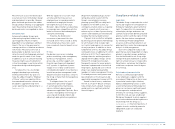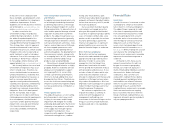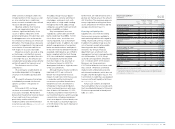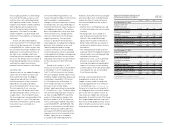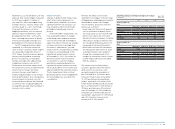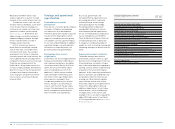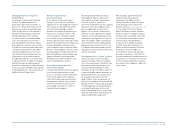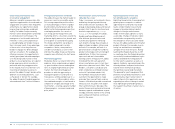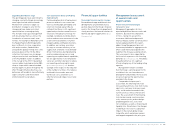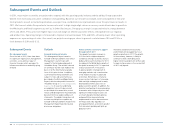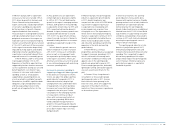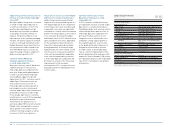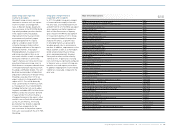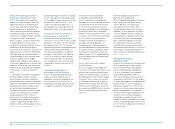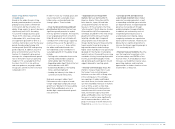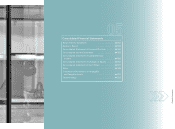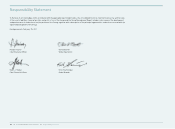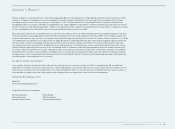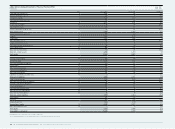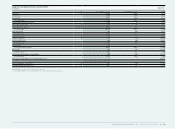Reebok 2010 Annual Report Download - page 179
Download and view the complete annual report
Please find page 179 of the 2010 Reebok annual report below. You can navigate through the pages in the report by either clicking on the pages listed below, or by using the keyword search tool below to find specific information within the annual report.
Group Management Report – Financial Review Subsequent Events and Outlook 175
In Western Europe, GDP is expected to
increase at a low rate of around 1.5% in
2011, driven by growth in Germany and
France. Manufacturing investments,
export activity and a steady improvement
in consumer spending are expected to
be the key drivers of growth. However,
negative headwinds from austerity
measures due to sovereign debt concerns
and high unemployment levels in many
peripheral economies of the region are
expected to persist. European emerging
markets are estimated to grow at around
4.1% in 2011, with most of the economies
in this region forecasted to be positively
impacted by rising exports and steadily
improving consumer spending. Russia
in particular is projected to benefit from
expected increases in commodity prices.
In North America, GDP is forecasted
to grow approximately 3.3% in 2011.
Expansion in the USA is expected to be
supported by further stimulus measures
such as quantitative easing, tax cuts and
benefit payments. Low interest rates,
increases in consumer and corporate
spending as well as strong exports
supported by a weakening dollar are
also forecasted to contribute to growth.
Nevertheless, the USA’s significant debt
obligations, high unemployment rates
and low wage and personal income
growth are all negative factors for the
region.
In Asia, growth rates are expected to
remain high, but to decelerate slightly
to 4.8% in 2011. This will be driven by
growth in the region’s emerging markets.
Of these, GDP growth in China and India
is expected to remain robust at 8.9% and
8.0%, respectively, driven by domestic
demand. In Japan, however, growth rates
are projected to decelerate to around
1.0% in 2011. As government stimulus
comes to an end, low levels of domestic
demand including declines in consumer
spending are expected to weigh on the
economy.
In Latin America, growth rates are
likely to moderate to a level of around
4.8% in 2011. Increases in commodity
prices as well as strong export levels
are expected to positively impact many
of the region’s economies. Most Latin
American economies are also forecasted
to see continued wage growth and strong
consumer spending levels.
Increases in consumer spending to
support sporting goods industry growth
In the absence of any major economic
shocks, we expect the global sporting
goods industry to expand in 2011. In
advanced economies, despite high
unemployment rates and modest levels
of wage growth, consumer spending
increases are forecasted to be higher
compared to the prior year. Private
consumption in the emerging markets
is forecasted to continue at robust
rates, with increases particularly in
discretionary spending. While these
trends underpin the opportunity for
growth for the sporting goods industry
in 2011, inflation in footwear and apparel
prices due to higher input costs may
dampen growth.
In Western Europe, the sporting goods
industry is expected to grow modestly
in 2011, despite tough prior year
comparisons due to the 2010 FIFA World
Cup. Growth in apparel in particular
is expected to be challenging, with
increasing pressure on prices from
rising input costs. The improvement in
trends seen in the European emerging
markets is expected to continue in 2011.
Growth is projected to be led by Russia,
where increasing disposable incomes
and consumer spending are promoting
expansion in the retail and sporting
goods industry.
In North America, stimulus
programmes and tax breaks are expected
to support consumer spending in 2011,
which is reflected in increasing levels
of consumer confidence. Footwear and
apparel sales in the sporting goods
industry are projected to grow in 2011.
From a category perspective, basketball,
lightweight running and outdoor apparel
are seen as particular drivers for the
year.
In Greater China, rising domestic
consumption is forecasted to propel
sporting goods sales in 2011. Income
levels have also been growing in the
lower tier cities, which will support the
expansion of the industry into these
markets as these consumers spend more
on discretionary items.
In other Asian markets, the sporting
goods industry is forecasted to grow,
however with regional variances. Rapidly
growing markets such as India, Indonesia
and Vietnam are expected to provide
further potential for sporting goods
brands. India should receive an additional
tailwind from the 2011 ICC Cricket World
Cup. However, in Japan falling consumer
confidence and spending is forecasted to
continue in 2011, with lacklustre demand
ensuring the sporting goods sector is
likely to remain challenged.
The sporting goods industry in Latin
America is projected to grow in 2011,
with falling unemployment rates and
rising income levels promoting consumer
spending. This is expected to support
discretionary spending in this region
and positively impact the sporting goods
sector. However, inflationary pressure,
particularly on apparel, is a potential
headwind to growth.


